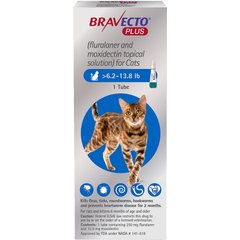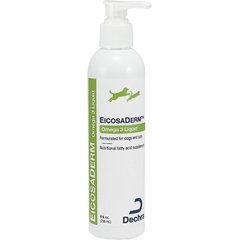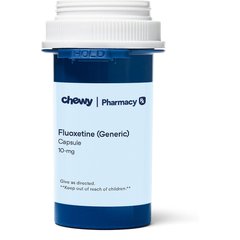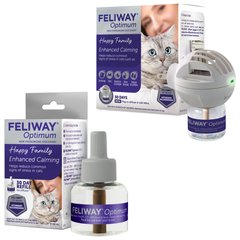Skin Conditions in Cats: Types, Symptoms, and Treatment
Irina Orlova/iStock / Getty Images Plus via Getty Images
Cats with skin conditions can experience significant discomfort due to itching and underlying inflammation. When dealing with skin conditions in cats, it’s important to determine the underlying cause so appropriate treatment can begin.
Let’s discuss the most common skin conditions in cats, symptoms to watch for, and available treatment options for affected cats.
Key Takeaways
- Skin conditions in cats can be caused by a variety of problems—ranging from minor issues, such as poor grooming, to more serious concerns, such as infections.
- Treatment for skin conditions in cats depends on the underlying cause.
- To ensure a speedy recovery, pet parents should follow their veterinarian’s directions closely when administering prescription medications or providing care at home.
10 Most Common Skin Conditions in Cats
Although there are numerous types of skin conditions in cats, let’s take a brief look at 10 of the most common ones.
-
Flea allergy dermatitis—This inflammatory condition is caused by an allergy to flea bites and causes hair loss, excessive itching, and red bumps on the skin. The most common areas affected include the head, chin, and tail base.
-
Allergic dermatitis—Food or environmental allergies can cause crusty, irritated skin and hair loss, most commonly on the ears, rear, belly, and groin.
-
Feline acne—This condition results from plugged hair follicles, causing tiny blackheads or pimples to form in the affected areas. The chin is most affected.
-
Superficial pyoderma—A result of a bacteria or yeast infection of the skin, superficial pyoderma causes in crusty, darkened skin, small bumps, and itchiness. This type of infection can affect any part of the body, but most commonly develops between the paw pads, in the groin area, and on the head.
-
Ringworm—This is a fungal infection in cats that causes circular areas of hair loss and inflamed skin. Although any part of the body can be affected, the face and ears are most common.
-
Abscess—A cat bite or traumatic event can cause a wound that can become infected. If the wound closes and fills with pus, an abscess can occur. A cat abscess may require draining by a veterinarian.
-
Dry skin—Poor nutrition, stress, and underlying disease can contribute to dry skin, which often causes flakes similar to dandruff.
-
Eosinophilic granuloma—This inflammatory condition results in raw, ulcerated skin and hairless, itchy plaques (areas of red, raised skin). The mouth and lips are most affected, but lesions can also develop on the belly and legs.
-
Tumors—Cats can develop many types of skin growths, ranging from cysts to cancer. These lumps vary in appearance, and cats may itch or lick the affected area.
-
Pemphigus foliaceus—This autoimmune condition causes cats to develop scabs and ulcers over their body. Commonly affected areas include the nose, face, ears, belly, and feet.
Causes of Skin Conditions in Cats
Skin conditions in cats can be caused by a variety of problems ranging from minor issues, such as poor grooming, to more serious concerns, such as infections.
Each underlying cause results in different symptoms and requires specific treatment.
The most common causes of skin conditions in cats include:
-
Infections, most often caused by bacteria and yeast
-
Ringworm
-
Food allergies
-
Environmental allergies
-
Poor nutrition
-
Improper grooming
-
Behavioral conditions, such as stress or anxiety
-
Trauma, such as a cat bite or wound
-
Abnormal growth of cells, such as tumors
-
Overactive immune system
-
Other underlying health concerns, such as diabetes
Symptoms of Skin Conditions in Cats
Symptoms of skin conditions in cats can vary depending on the underlying cause, but may include:
-
Itchiness
-
Hair loss
-
Small, raised bumps
-
Red, inflamed skin
-
Crusty or ulcerated skin
-
Open sores that may or may not contain pus
-
Change in skin color (dark brown areas)
-
Itchy, inflamed ears
-
Flaky skin
-
Excessive grooming
-
Lumps
Cats with skin conditions may feel uncomfortable, act lethargic, have a decreased appetite, or become less affectionate.
How Veterinarians Diagnose Skin Conditions in Cats
A veterinarian will start with a complete physical exam, paying close attention to all areas of the cat’s skin and fur.
Pet parents should mention to their vet when they first noticed concerning symptoms in their cat and any recent history that may be helpful in making a diagnosis, such as recent contact with other cats, any changes in the diet or in the home, or exposure to irritants.
If a veterinarian suspects a skin condition, testing to determine the underlying cause may include the following:
-
Flea combing—Using a fine-toothed comb, a veterinarian brushes the cat’s fur to see if any live fleas or flea dirt (small brown flecks of flea excrement) are seen.
-
Skin scrape—A scalpel blade is gently scraped against the cat’s skin to collect a sample of skin cells. The cells are mixed with a drop of oil on a glass slide and viewed under a microscope to look for skin mites and their eggs.
-
Tape prep/skin swab—A piece of clear tape or a cotton swab is gently pressed against the cat’s skin in the affected area. The sample is added to a glass slide, stained, and then viewed under a microscope to look for bacteria and yeast that may be causing an infection.
-
Fungal culture—A small sample of hair is plucked from the affected area and added to a special culture plate to determine whether ringworm is present.
-
Fine needle aspirate (FNA)—A small needle is inserted into a skin lump to collect a sample of cells. This sample is added to a glass slide, stained, and then viewed under a microscope to identify the types of cells present.
-
Skin biopsy—A small section of the affected skin is removed and sent to a special laboratory for testing and diagnosis. This test requires local or general anesthesia, depending on the location of the affected area.
Additional diagnostics such as allergy testing, diet trials, and blood work may be performed if the veterinarian deems them necessary in the search for a diagnosis.
Treatment of Skin Conditions in Cats
Treatment for skin conditions in cats depends on the underlying cause.
Treatment may include oral or topical antibiotics, antifungals, antihistamines, steroids, or immunomodulating medications. Skin parasites are treated with a flea and tick preventive, such as Bravecto® PLUS.
Cats with food allergies are fed a prescription hypoallergenic diet. Cats with dry skin often benefit from omega-3 fatty acid supplements such as EicosaDerm™.
Cats who are excessively grooming due to underlying stress or anxiety can benefit from certain medications, such as fluoxetine, or pheromone products like Feliway®.
In some instances, surgery may be needed for large lumps that are cancerous or interfere with a cat’s mobility.
Recovery and Management of Skin Conditions in Cats
Recovery of skin conditions in cats varies. It depends on the underlying cause of the skin issue.
Most cats recover quickly once the underlying cause is successfully diagnosed and treated with medication or surgery.
However, cats with allergies and autoimmune diseases require lifelong treatment to manage their conditions.
To ensure a speedy recovery, pet parents should follow their veterinarian’s directions closely when administering prescription medications or providing care at home.
Cats should always be brought in for appropriate follow-up care to ensure the condition has resolved completely before treatment is ended.
Prevention of Skin Conditions in Cats
Some skin conditions—such as those resulting from autoimmune disease—are not preventable.
However, ensuring your cat receives regular veterinary checkups and wellness care can help the veterinarian identify any skin issues early, so they can be treated before they progress.
Feeding a high-quality, nutritious diet can reduce the risk of dry skin and itchiness.
Cats should be kept up to date on flea and tick prevention to protect them from parasites that can cause itchy, inflamed skin. For cats who experience allergies, limiting contact with the allergens can help prevent skin flare-ups.






